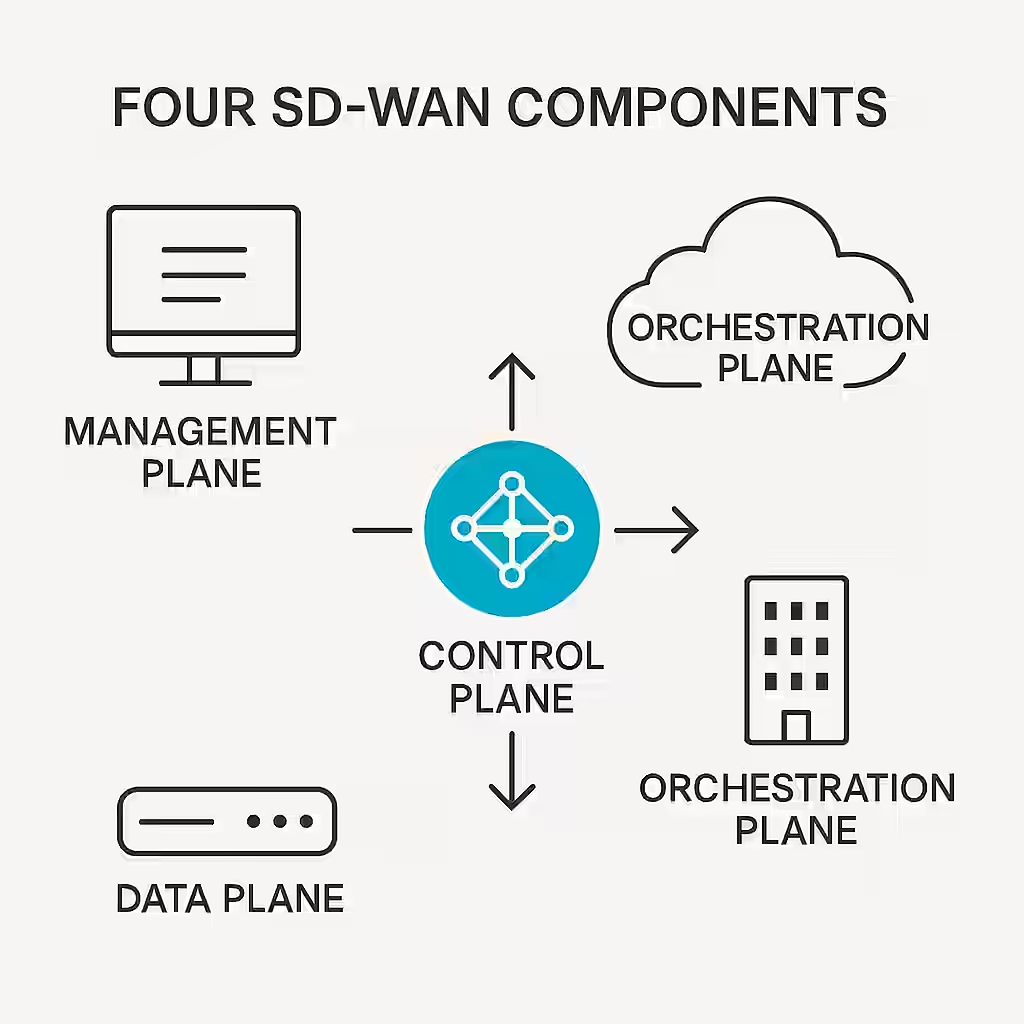Every masterpiece needs a solid foundation, and Cisco SD-WAN is no exception. At the heart of this powerful solution lies a set of components, each playing a crucial role in shaping how data flows, how policies are enforced, and how networks are managed. Let’s take a journey through the four pillars that form the backbone of Cisco SD-WAN: the data plane, control plane, management plane, and orchestration plane.
Picture your SD-WAN network as a well-oiled machine. The data plane is where the action happens—traffic flows from branch to data center, to cloud applications, and beyond. It’s here that tunnels are built, encrypted, and data securely finds its way to the right destination. The data plane’s key player? The WAN edge devices, known as vEdge or cEdge routers.
Above the data plane sits the control plane, orchestrated by the vSmart controllers. These act like air traffic control, managing routes, sharing updates, and ensuring that data finds the most efficient and secure path. They’re the brains of the operation, leveraging the Overlay Management Protocol (OMP) to distribute routing information throughout the fabric.
Overseeing it all is the management plane, embodied by Cisco vManage. Think of it as the command center, a single dashboard that provides a panoramic view of your entire network. From here, you can deploy policies, monitor performance, and troubleshoot issues in real time. No more jumping between tools or devices—vManage centralizes everything.
Then there’s the orchestration plane, represented by vBond orchestrators. This component is the gatekeeper, responsible for authenticating all devices before they join the SD-WAN fabric. vBond ensures that only trusted components become part of your network, establishing secure control connections.
Cisco SD-WAN’s architecture is built with scalability in mind. It can handle multi-tenancy, allowing service providers to deliver managed SD-WAN services to different customers on shared infrastructure. It can also be deployed in a variety of ways—on-premises, in the cloud, or as a hybrid model—to fit your unique business needs.
Before you dive in, consider your deployment model: will you leverage vEdge devices or opt for Cisco’s cEdge, built on the ISR/ASR platforms? Will you deploy everything on-premises, or lean on the cloud for flexibility and scale? These decisions will shape your journey and your ability to deliver on the promise of a modern WAN.
Here’s a sneak peek at a verification command that becomes invaluable as you explore the different SD-WAN components:
show sdwan deviceThis command displays the list of all devices in the SD-WAN fabric, giving you quick insight into how your environment is coming together.
- What is the primary role of the data plane in SD-WAN?
Answer: It forwards and encrypts data traffic between sites and applications. - Which SD-WAN component manages the control plane and handles routing updates?
Answer: vSmart controllers. - What is the main function of vManage?
Answer: It acts as the centralized management dashboard for monitoring and configuration. - How does vBond contribute to SD-WAN security?
Answer: It authenticates devices before they join the SD-WAN fabric. - What deployment options are available for SD-WAN?
Answer: On-premises, cloud, or hybrid deployment models.
